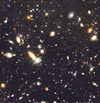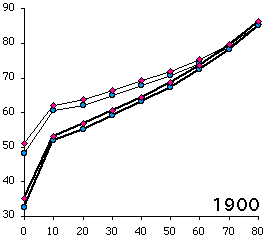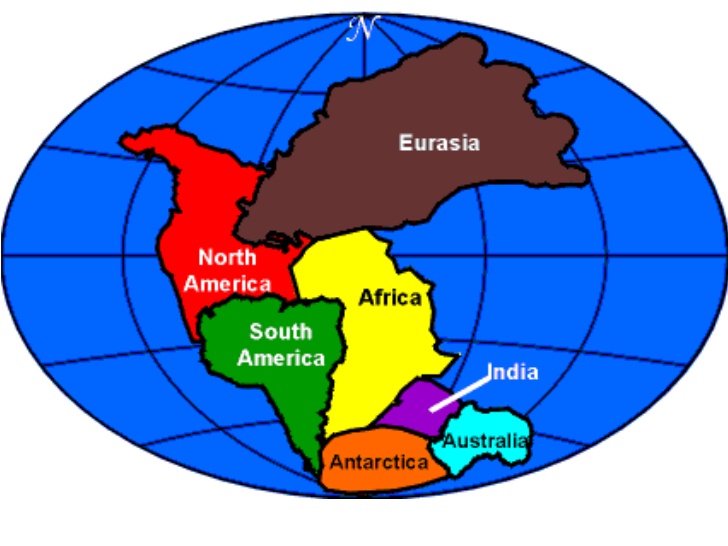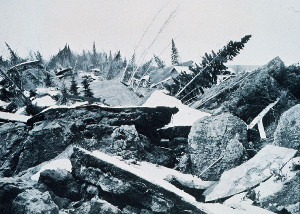 |
 | ||||||||||||
|
|||||||||||||
Here are some links I found:
Plate tectonics and continental drift:
|
|||||||||||||

Margins of error
Margins of error are an important concept in experimental science. This morning at breakfast there was this article on the front page of the Santa Fe New Mexican, showing the results of a poll taken in the race for the 3rd congressional district. It showed Udall with 42%, Redmond 35%, Miller 8%, undecided 15%. If the election were held today, I asked the kids, who would win? This was a great question, which led to a number of topics. First of all, what (more) |
|||||||||||||

How many stars are there
in the universe?
I don't have a copy of Carl Sagans book to look up how many billions and billions he thought there were, but here's my guess: Just this week there was a nice article in Scientific American (Oct 98) on our own galaxy and its close neighbors. There I found the estimated number of stars in our own galaxy: about one trillion. The next thing to find out is how many galaxies are there in the universe? For that I went to the Hubble Space Telescope. In 1995, Hubble made a set of observations called the 'Hubble Deep Field'. Basically it stared a tiny patch of the sky which contained no foreground stars or dust clouds, and made an exposure so long that the faintest, furthest galaxies showed up. The size of the field was the size of the period at the end of this sentence, when seen at reading distance. If I assume the dot is 1/2x1/2mm, and reading distance 50cm, it would take about "100%" height=5 000 such fields to cover the whole sky. I believe there are 1000-2000 galaxies in the HDF picture. So my guess for the number of stars in the universe is equal to the number of galaxies in the HDF, times the number of HDF's on the sky, times the number of stars per typical galaxy, or 1500 x 500 000 x 1000 000 000 000 is 750000000000000000000 stars, or 10**21 when rounded up, which is a sextillion start. [We talked about how you form the names of big numbers like that]. Are all these stars sprinkled randomly through space? This is similar to asking if people are distributed randomly on the surface of the earth. People live in small groups in houses, houses are strung together along streets; streets cluster to make towns and cities, and cities can be mostly found along coastlines and rivers. There are vast spaces (oceans, deserts) where hardly a person can be found. Stars similarly congregate: our sun is grouped together with many others in an arm of a spiral-arm galaxy, several arms make up the galaxy; our galaxy is a member of a local group of galaxies, which in turn is a member of the local galaxy supercluster. These clusters can be found along ribbons and sheets of other clusters, and so on up to the largest scales at which we have been able to look. In between the ribbons, sheets and walls of galaxies, there are vast volumes in which hardly a star can be found. be found.
Some links:
|
|||||||||||||

How come people and dogs live longer
than they did 100 years ago? I don't know about dogs (yet), but if you look at the links below, it is certainly true for humans over the last centuries. Check out Japan (83 for women), Sub-Saharan Africa (50), the middle ages (31), and the last 100 years in Estonia. Increases in life expectancy is due to sanitation mostly, and then primary care medicine. The graph on the top right (stolen from one of the links below), shows an interesting trend: although your chances at birth are getting better and better, the maximum age has not risen much at all. The maximum life span of humans seems to be pretty much fixed, but more and more people are getting up there. I could not find much about dogs, but the part about medicine should hold true for dogs too. Are things getting better for horses too? You'd think that continuous advances in training, medicine and careful breeding would produce ever faster race horses. This seems to be true if you look at short-distance races, where records regularly get broken. However, for longer races this is not true. Why? Nobody knows. (SciAm xx 1991). Life expectancy links
How long will you live? Find out:
|
|||||||||||||
| |||||||||||||





